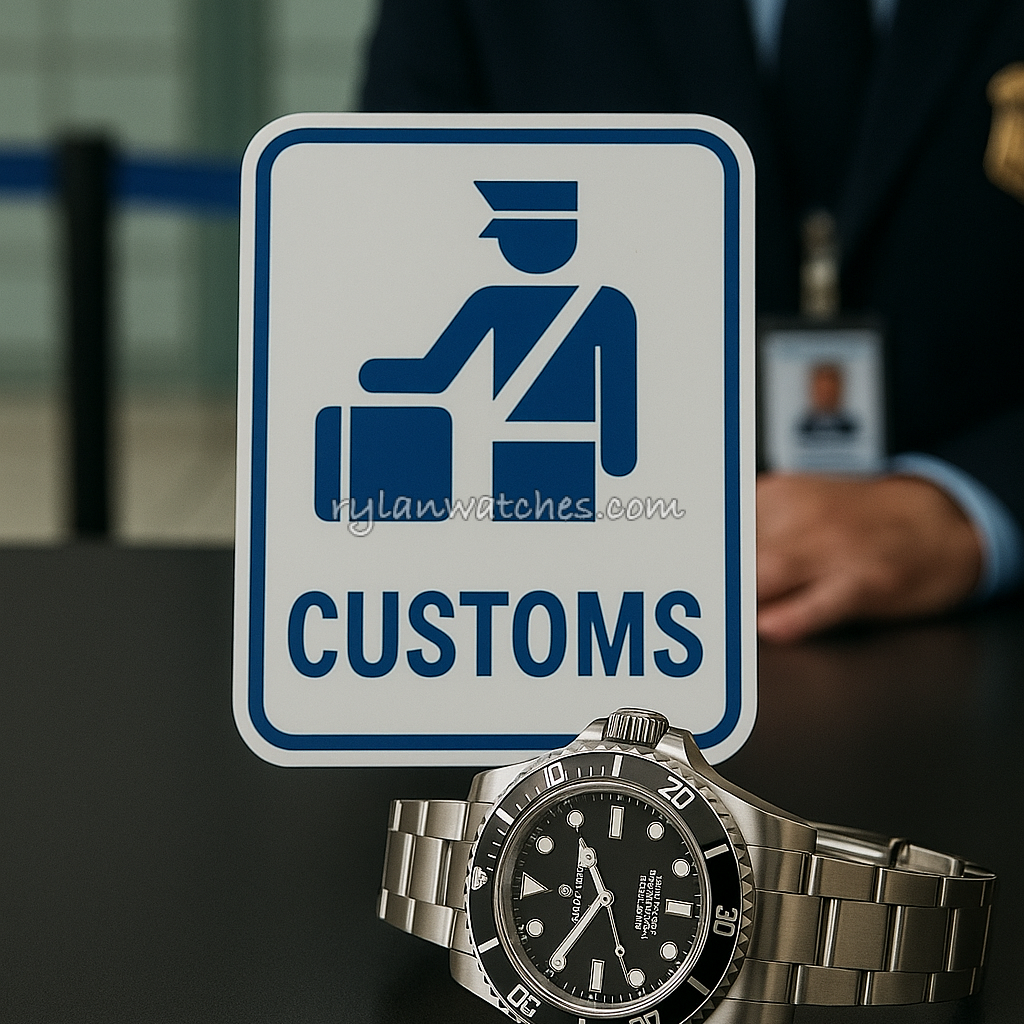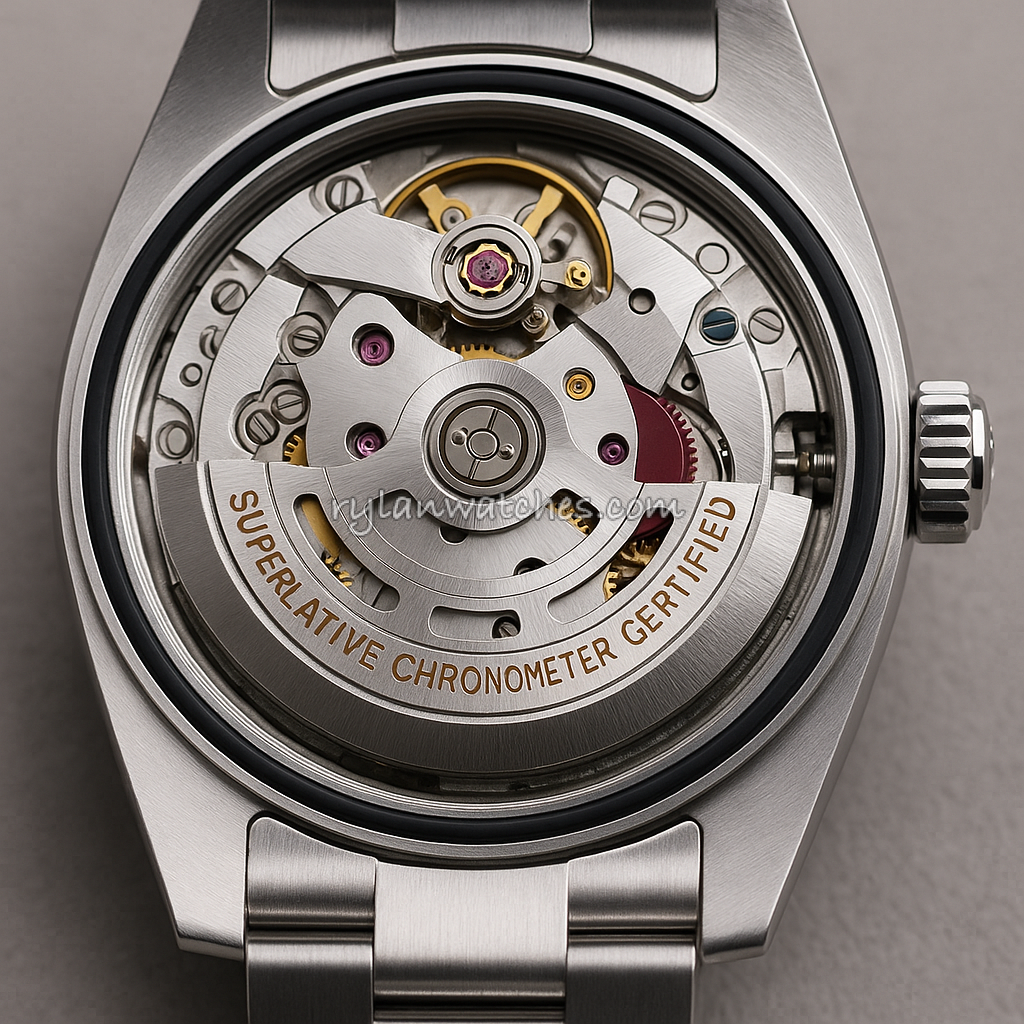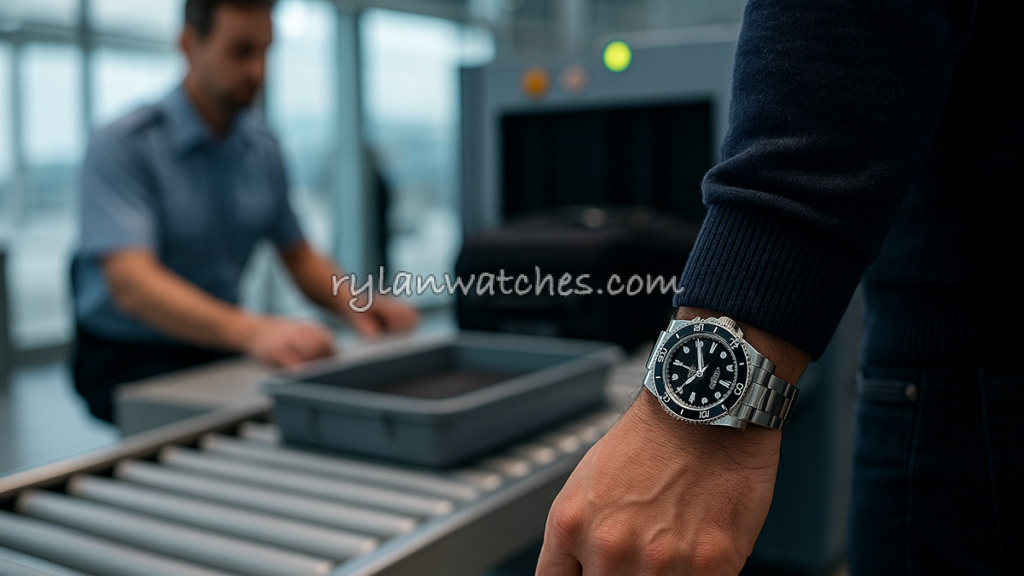Introduction — Why Customs Risk Matters for Super Clone Owners
For many enthusiasts, the allure of high-end timepieces has led to a growing market of 1:1 replicas known as super clones. These watches promise near-perfect aesthetics and movement fidelity, often rivaling their Swiss counterparts at a fraction of the cost. Yet, few buyers realize that ownership comes with hidden challenges when crossing international borders. The term super clone watches customs risk may sound theoretical—until customs officers decide to inspect your luggage or wrist. That’s when legality, perception, and enforcement intersect in ways most collectors never anticipate.
Customs authorities around the world have intensified inspections for counterfeit goods as part of intellectual property enforcement. Even though super clones differ from cheap fakes in quality and intent, they are often treated under the same legal umbrella. In practice, this means that a traveler wearing or carrying such a watch can face seizure, fines, or even questioning at airports. Countries like Switzerland, Japan, and the United States are particularly vigilant, given their strong ties to the luxury watch industry.
Many travelers believe that wearing a single watch poses no problem. While this is often true, risk varies widely by jurisdiction. Some countries emphasize commercial intent—multiple items packaged for sale—while others penalize mere possession of counterfeit-branded goods. As a result, understanding customs regulations before traveling is not optional; it’s essential. As discussed in our related guide, traveling with super clone watches requires discretion, preparation, and awareness of what authorities might perceive as infringement.
Beyond legality, the customs issue reflects broader ethical and logistical concerns. Are these watches harmless collectibles or intellectual property violations? Can they be insured, serviced, or declared at border crossings? These questions shape not only traveler experiences but also the reputation of the clone watch industry itself. Understanding these nuances will help owners navigate the fine line between admiration for craftsmanship and respect for legal boundaries.
How Customs Detect Super Clone Watches
Modern customs agencies rely on increasingly sophisticated methods to identify counterfeit and super clone goods. At major airports and shipping hubs, advanced X-ray imaging and AI-driven pattern recognition systems flag high-value watch profiles during baggage scans. Officers are trained to recognize packaging, weight discrepancies, and signature design cues from brands like Rolex, Patek Philippe, and Audemars Piguet. In Europe, the process aligns with the EU Customs Authority’s inspection protocols, which specifically target luxury counterfeits.
In some regions, customs teams maintain digital databases of serial numbers and known counterfeits. When an officer encounters a branded item, they may cross-reference it against known entries. This poses unique challenges for super clones, which replicate genuine reference numbers and micro-engraving patterns with extraordinary precision. Even professional appraisers sometimes struggle to distinguish them from authentic pieces without opening the caseback. However, once inspected internally, differences such as rotor engraving, movement layout, or balance bridge design reveal the truth.
It’s important to note that customs enforcement focuses primarily on commercial quantities and undeclared imports. A traveler wearing a single watch may pass unnoticed 99% of the time, yet random checks remain unpredictable. If discovered, the outcome depends on the officer’s discretion and local legal framework. In some cases, travelers are warned and released; in others, the watch is seized under suspicion of trademark infringement.
To minimize exposure, travelers should avoid traveling with multiple boxed watches or any material implying resale. Simple actions—removing tags, avoiding branded packaging, and wearing the piece naturally—can dramatically reduce risk. Transparency helps too; when possible, carry proof of purchase from a legitimate retailer or factory, particularly if the item lacks overt logos. Customs officers rarely target private collectors acting in good faith, but once suspicion arises, professionalism and calm honesty can make all the difference.
Legal Perspective — Are Super Clone Watches Considered Counterfeit?
From a legal standpoint, the distinction between a “replica,” a “super clone,” and a “counterfeit” is more than semantics. Most countries operate under the World Trade Organization’s TRIPS agreement and WIPO intellectual property guidelines, which define any unauthorized use of registered trademarks as counterfeit—regardless of quality. This means even if a super clone features impeccable build and Swiss-like performance, it remains illegal in jurisdictions that protect brand marks strictly.
In the European Union, customs agencies treat super clones as infringing goods. Seizures can occur without the owner’s intent to sell. In the United States, Customs and Border Protection (CBP) classifies them under counterfeit merchandise, subject to confiscation and destruction. Asian markets show greater variability: in Hong Kong or Thailand, personal use may be overlooked, while Japan and Singapore enforce stricter bans. This fragmented landscape creates confusion for global travelers, amplifying super clone watches customs risk even when the item is for private enjoyment.
There’s also a misconception that removing logos or traveling with homage versions eliminates legal concerns. In reality, design patents and distinctive trade dress can still fall under protection. What matters most is whether the product could mislead others about its origin. That’s why customs officers focus on the presence of brand identifiers, not just the mechanical features inside.
For deeper insights on legality across major markets, our in-depth analysis Are Super Clone Watches Legal? explains jurisdictional differences and penalties. Understanding those principles before you fly can mean the difference between an uneventful trip and an unexpected seizure. Even enthusiasts with the purest intentions must remember: customs laws prioritize intellectual property, not craftsmanship admiration.

Real-World Cases — When Customs Confiscate Watches
While online discussions about super clone watches customs risk often sound hypothetical, real-world incidents show that confiscations do happen. In Switzerland, a country synonymous with luxury horology, customs authorities have confiscated high-quality replicas from travelers arriving through Geneva and Zurich airports. Several reports describe tourists losing clone Rolex or Patek Philippe watches even when they claimed personal use. The reasoning? Swiss law grants customs the right to seize any product bearing a protected trademark without proof of purchase or authorization. Because the local industry’s protection is so integral to the economy, tolerance for super clones there is virtually zero.
In 2023, a similar case occurred in Japan, where a traveler’s luggage was flagged by Narita Airport’s inspection system for multiple “watch-shaped metallic objects.” Upon manual inspection, officers discovered three high-end clones, including an Audemars Piguet Royal Oak. The items were seized, and the traveler fined under Japan’s Unfair Competition Prevention Act. Interestingly, the fine was small—but the watches were never returned. It illustrated the gray line between intent and possession: even without resale motive, ownership of multiple trademarked replicas was deemed sufficient for confiscation.
In the United States, cases vary by port of entry. U.S. Customs and Border Protection (CBP) prioritizes commercial imports but retains the authority to confiscate counterfeit items regardless of intent. There have been documented seizures at Los Angeles and JFK airports where super clones shipped from Hong Kong were intercepted. Although individuals rarely face prosecution for single items, repeated importation or bulk quantities trigger investigation. The CBP’s official statements, accessible via cbp.gov/trade, confirm that even personal-use counterfeit items are subject to forfeiture under federal law.
Contrastingly, travelers in Dubai or Southeast Asia report minimal interference. Customs agencies in these regions typically focus on controlled substances, undeclared cash, and electronics rather than intellectual property. However, that leniency does not equal legality. If an airline inspection coincides with international enforcement campaigns, even relaxed jurisdictions can act strictly. One traveler recounted on a horology forum that his super clone was seized during a random inspection at Changi Airport—a rare but sobering reminder that global coordination among customs agencies continues to increase.
These examples reveal the unpredictable nature of enforcement. The key takeaway? Risk depends on where you travel, not just what you carry. While online anecdotes can guide expectations, no guarantee exists. Travelers should always assume that any item resembling a branded luxury watch could face scrutiny, especially in regions where intellectual property protection is politically or economically sensitive.
How to Travel Smart and Minimize Customs Risk
Although confiscation stories can sound alarming, smart travelers can significantly reduce exposure to customs issues. The simplest precaution is also the most effective: wear, don’t carry. Customs officers are far less likely to challenge a watch being worn naturally than multiple boxed pieces in luggage. Avoid carrying packaging, authentication cards, or any material that signals new purchase intent. When traveling internationally, subtlety matters; a super clone should never draw unnecessary attention.
Documentation helps too. Even though invoices from clone retailers are not legally binding proof of authenticity, they can demonstrate that the item was purchased openly, not smuggled. If your trip includes stops in strict jurisdictions—like Switzerland, Japan, or Germany—consider switching to a homage or microbrand piece. Brands such as Steinhart or Baltic offer Swiss-inspired designs without trademark concerns. For more practical guidance on international travel and clone ownership, see our internal resource Travel Guides for Super Clone Owners.
Discretion extends beyond the airport. Avoid public discussions or social media posts that showcase logos while abroad. In certain countries, customs surveillance teams monitor online marketplaces and even passenger photos for high-value goods. If your super clone appears too prominently linked to a brand, it might raise red flags. Travelers should also remember that insurance policies typically exclude coverage for counterfeit items, meaning any loss or confiscation cannot be reimbursed.
Another wise move is to understand import thresholds. Many customs websites—such as the IATA Traveler Guidelines—explain personal exemption limits for luxury items. Staying within those thresholds keeps you compliant and avoids suspicion. For example, bringing two watches totaling under $1,000 often passes inspection quietly, while carrying five “Rolex-labeled” watches may trigger immediate inspection. When in doubt, declare rather than conceal; honesty at customs is safer than improvisation under pressure.
Ultimately, minimizing risk is about behavior and awareness. The fewer signals you send that suggest trade or misrepresentation, the better your odds of an uneventful journey. Treat your watch as a personal accessory, not a collectible commodity. Those who prepare responsibly and travel with realistic expectations rarely face issues—even when wearing a super clone.

Customs Risk by Country — Where You Should Be Careful
Not all borders treat clone watches equally. While the underlying trademark laws share a common foundation, enforcement levels vary dramatically across regions. Understanding where risks concentrate helps travelers plan responsibly. Below is a simplified overview of how different customs agencies approach the issue of super clone watches:
| Country / Region | Risk Level | Policy Notes |
|---|---|---|
| 🇨🇭 Switzerland | 🔴 High | Zero tolerance; customs seize any trademarked clone regardless of quantity. |
| 🇯🇵 Japan | 🔴 High | Strict under Unfair Competition Law; even personal items can be confiscated. |
| 🇺🇸 USA | 🟠 Moderate–High | CBP enforces brand protection; occasional leniency for single worn watches. |
| 🇩🇪 Germany / EU | 🟠 Moderate | EU customs collaborate under anti-counterfeit task forces; risk spikes during events like Baselworld. |
| 🇭🇰 Hong Kong | 🟢 Low | Personal use typically ignored, but resale subject to penalties. |
| 🇦🇪 Dubai | 🟢 Low | Customs rarely interfere; risk arises only with large shipments. |
These distinctions aren’t static. Enforcement changes with trade policy and brand lobbying influence. For instance, after high-profile counterfeit crackdowns in 2024, Singapore increased random baggage checks targeting counterfeit watches. Meanwhile, Southeast Asian hubs like Bangkok remain tolerant as long as items aren’t sold locally. The trend is clear: as super clones gain attention for quality, regulators are becoming more active in tracking their movement across borders.
For enthusiasts comparing models safer for travel, our collection of Best Super Clone Watches 2025 highlights pieces that balance quality with subtle branding, making them less likely to attract customs scrutiny. To stay updated on evolving regulations, visit the World Customs Organization, which publishes periodic guidelines on counterfeit goods enforcement. By knowing the global landscape, collectors can make informed choices about when and where to wear their watches without risking unnecessary confiscation.
Conclusion — Understanding Super Clone Watches Customs Risk
After reviewing the global picture, one truth becomes clear: the super clone watches customs risk is not imaginary—it’s a real, evolving challenge shaped by geography, legislation, and perception. What may be perfectly tolerated in one airport can trigger confiscation or penalties in another. Super clones occupy an unusual legal and moral gray area. They’re admired for precision and innovation but legally restricted because they reproduce protected branding. This contradiction defines why customs enforcement is inconsistent and often unpredictable.
For individual travelers, the safest rule is simple: assume your watch can attract scrutiny. Wearing one on your wrist during normal travel rarely results in issues, but carrying multiple pieces boxed or declaring luxury brands at checkpoints raises suspicion immediately. Customs authorities are less concerned with your taste in watches and more focused on the principle of trademark protection. Even if the piece feels harmless, to them it’s a symbol of intellectual property infringement. That perspective drives global coordination among agencies to detect and seize branded counterfeits more effectively than ever before.
Yet, it’s equally important to keep perspective. Customs enforcement tends to prioritize commercial smuggling, not individual enthusiasts. Many collectors wear their super clones across borders without incident. The difference lies in preparation, discretion, and honesty. Know the laws of your destination, understand enforcement intensity, and travel with minimal baggage. Treat your watch as part of your personal style, not as merchandise. If challenged, polite cooperation and documentation can often de-escalate situations quickly.
Legal uncertainty doesn’t erase the craftsmanship behind modern clones. The watch community’s growing respect for these pieces lies in how they democratize mechanical beauty once limited to elites. However, ownership carries responsibility. Wearing a super clone means respecting the boundaries of legality and acknowledging the intellectual property it borrows from. Being informed is the first step toward avoiding complications. As highlighted in our educational guide How to Spot a Super Clone, awareness is your best defense—both for distinguishing quality and staying compliant.
To put this topic in context, the OECD’s report on counterfeit trade reveals that luxury watch imitations represent one of the fastest-growing categories of seized goods worldwide. That statistic underscores why customs vigilance is increasing each year. The more refined super clones become, the more enforcement agencies adapt. Knowing where that line is—between admiration and violation—helps collectors make responsible decisions without fear or confusion.
Ultimately, traveling with or owning a super clone isn’t about testing limits—it’s about appreciating craftsmanship responsibly. The goal isn’t to challenge authority but to enjoy mechanical artistry within the bounds of awareness. As the global conversation around clones evolves, so should our understanding. Knowledge, preparation, and discretion remain the true tools of a smart collector. Whether you’re flying from Dubai to Tokyo or simply crossing borders for leisure, respect for law and appreciation for design can coexist. When you understand the customs risk, your timepiece remains what it was meant to be—a symbol of precision, not a source of trouble.
